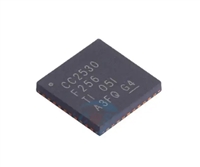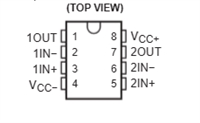CYWB022XX Family
P-Port of the WLCSP package only supports PNAND and SPI
interface.
Functional Overview
Turbo-MTP Support
The memory address is decoded to access any of the multiple
endpoint buffers inside Astoria. These endpoints serve as buffers
for data between each pair of ports, for example, between the
processor port and the USB port. The processor writes and reads
into these buffers through the memory interface.
Turbo-MTP is an implementation of Microsoft’s MTP enabled by
West Bridge. In the current generation of MTP-enabled mobile
phones, all protocol packets needs to be handled by the main
processor. West Bridge Turbo-MTP switches these packet types
and sends only control packets to the processor, while data
payloads are written directly to mass storage, thereby bringing
the high performance of West Bridge to MTP. For more
information refer to the application note Optimizing Performance
using West Bridge® Controllers with Turbo-MTP.
Access to these buffers is controlled by either using a DMA
protocol or using an interrupt to the main processor. These two
modes are configurable by the external processor. The 81-ball
WLCSP package only supports interrupt.
As a DMA slave, Astoria generates a DMA request signal to
signify to the main processor that a specific buffer is ready to be
read from or written to. The external processor monitors this
signal and polls Astoria for the specific buffers ready for read or
write. It then performs the appropriate read or write operations
on the buffer through the processor interface. This way, the
external processor only deals with the buffers to access a
multitude of storage devices connected to Astoria.
SLIM Architecture
The SLIM architecture enables three different interfaces (P-port,
S-port, and U-port) to connect to one another independently.
With this architecture, connecting a device using Astoria to a PC
through USB does not disturb any of the functions of the device.
The device can still access mass storage at the same time as the
PC synchronizes with the main processor.
In the interrupt mode, Astoria communicates important buffer
status changes to the external processor using an interrupt
signal. The external processor then polls Astoria for the specific
buffers ready for read or write and it performs the appropriate
read or write operations through the processor interface.
The SLIM architecture enables new usage models in which a PC
can access a mass storage device independent of the main
processor or enumerate access to both the mass storage and
the main processor at the same time.
In a handset, this typically enables using the phone as a thumb
drive, downloading media files to the phone while still having full
functionality available on the phone, or using the same phone as
a modem to connect the PC to the web.
FlexBoot
FlexBoot is an optional feature that Astoria emulates a NAND
Flash device. In this optional feature, the P-Port is configured as
pseudo NAND interface. The processor can download its boot
image through the P-Port.
8051 Microprocessor
When P-Port is configured to pseudo NAND interface, it supports
two operation modes:
The 8051 microprocessor embedded in Astoria does basic
transaction management for all the transactions between P-Port,
S-Port, and U-Port. The 8051 does not reside in the data path; it
manages the path. The data path is optimized for performance.
The 8051 executes firmware that supports SD, SDIO, MMC+,
and CE-ATA devices at the S-Port.
■ Logic NAND Access (LNA) mode
■ Non-Logic NAND Access (non-LNA) mode
LNA refers to the mode of operation where Astoria emulates a
NAND flash device. This mode is designed for systems that
require booting of the system processor from a NAND Flash
device. In this type of application, the system processor can
communicate to Astoria using common NAND commands to
boot from a NAND Flash connected to Astoria’s S-port. In this
mode of operation, Astoria mimics a real NAND device and
allows the system processor to use its internal boot-ROM to boot
from Astoria, as it boots from a NAND Flash.
Configuration and Status Registers
The West Bridge Astoria device includes configuration and
status registers that are accessible as memory mapped registers
through the processor interface. The configuration registers
allow the system to specify certain Astoria behaviors. For
example, it is able to mask certain status registers from raising
an interrupt. The status registers convey various status such as
the addresses of buffers for read operations.
In the non-LNA mode of operation, the system processor
interfaces with Astoria using standard NAND interface, but does
not use standard NAND commands. In this mode, Astoria
responds to a subset of NAND commands. The system
processor uses a set of APIs provided by Cypress to
communicate through its NAND controller to Astoria. For details,
refer to the application note “Interfacing To West Bridge™
Astoria’s™ Pseudo-NAND Processor Port“.
Processor Interface (P-Port)
Communication with the external processor is realized through a
dedicated processor interface. This interface is configured to
support different interface standards. This interface supports
multiplexing and nonmultiplexing address or data bus in both
synchronous and asynchronous pseudo CRAM-mapped, and
nonmultiplexing address or data asynchronous SRAM-mapped
memory accesses. The interface also can be configured to a
pseudo NAND interface to support the processor’s NAND
interface. In addition, this interface can be configured to support
SPI slave. Asynchronous accesses can reach a bandwidth of up
to 66.7 MBps. Synchronous accesses can be performed at
33 MHz across 16 bits for up to 66.7 MBps bandwidth. The
USB Interface (U-Port)
In accordance with the USB 2.0 specification, Astoria can
operate in both full speed and high speed USB modes. The USB
interface consists of the USB transceiver and can be accessed
by both the P-Port and the S-Port.
Document Number: 001-13805 Rev. *M
Page 3 of 78






 MC34063开关稳压器:全面参数解析与设计指南
MC34063开关稳压器:全面参数解析与设计指南

 CC2530无线微控制器:资料手册参数分析
CC2530无线微控制器:资料手册参数分析

 NE5532双低噪声运算放大器:资料手册参数分析
NE5532双低噪声运算放大器:资料手册参数分析

 74LS138 3-to-8线解码器/多路复用器:资料手册参数分析
74LS138 3-to-8线解码器/多路复用器:资料手册参数分析
